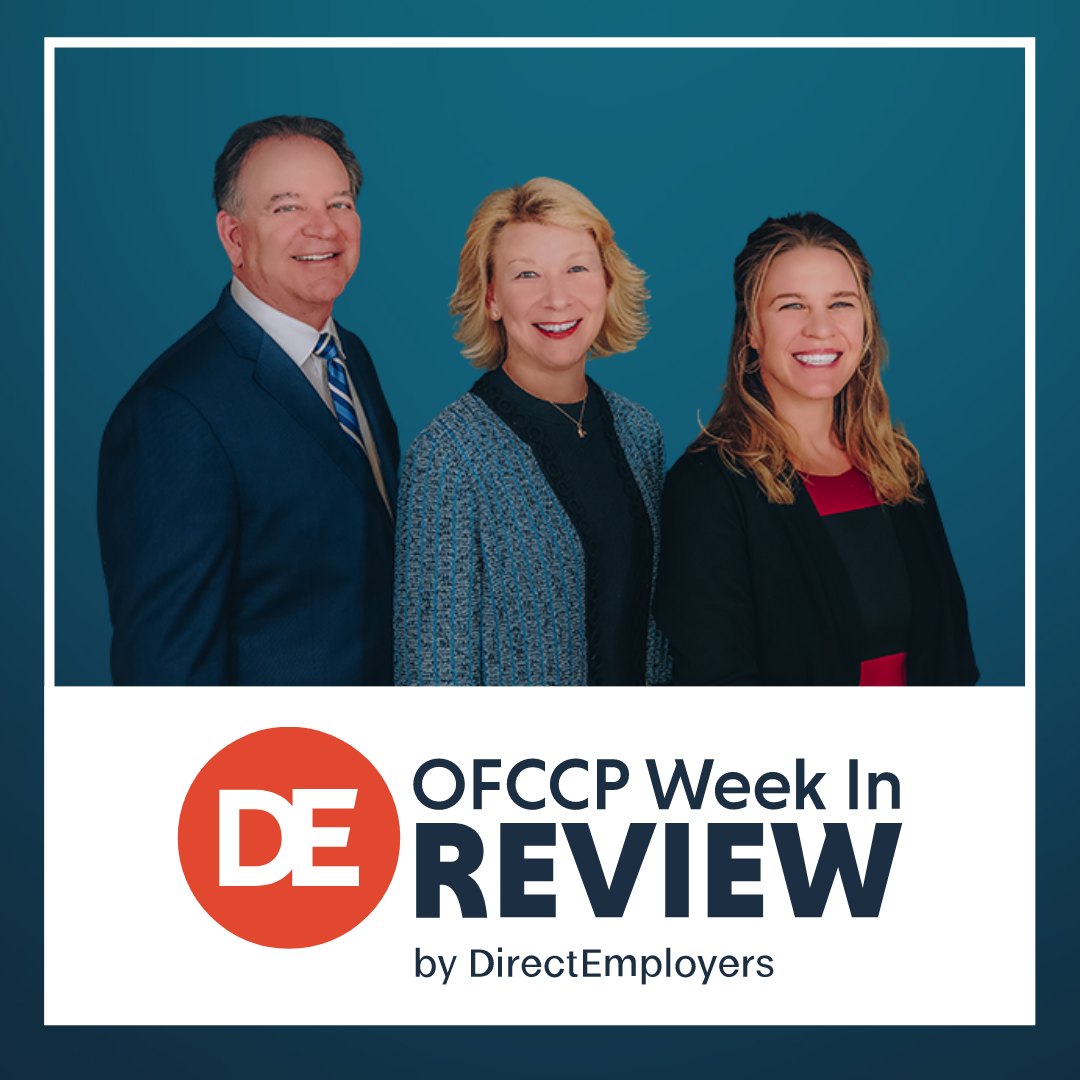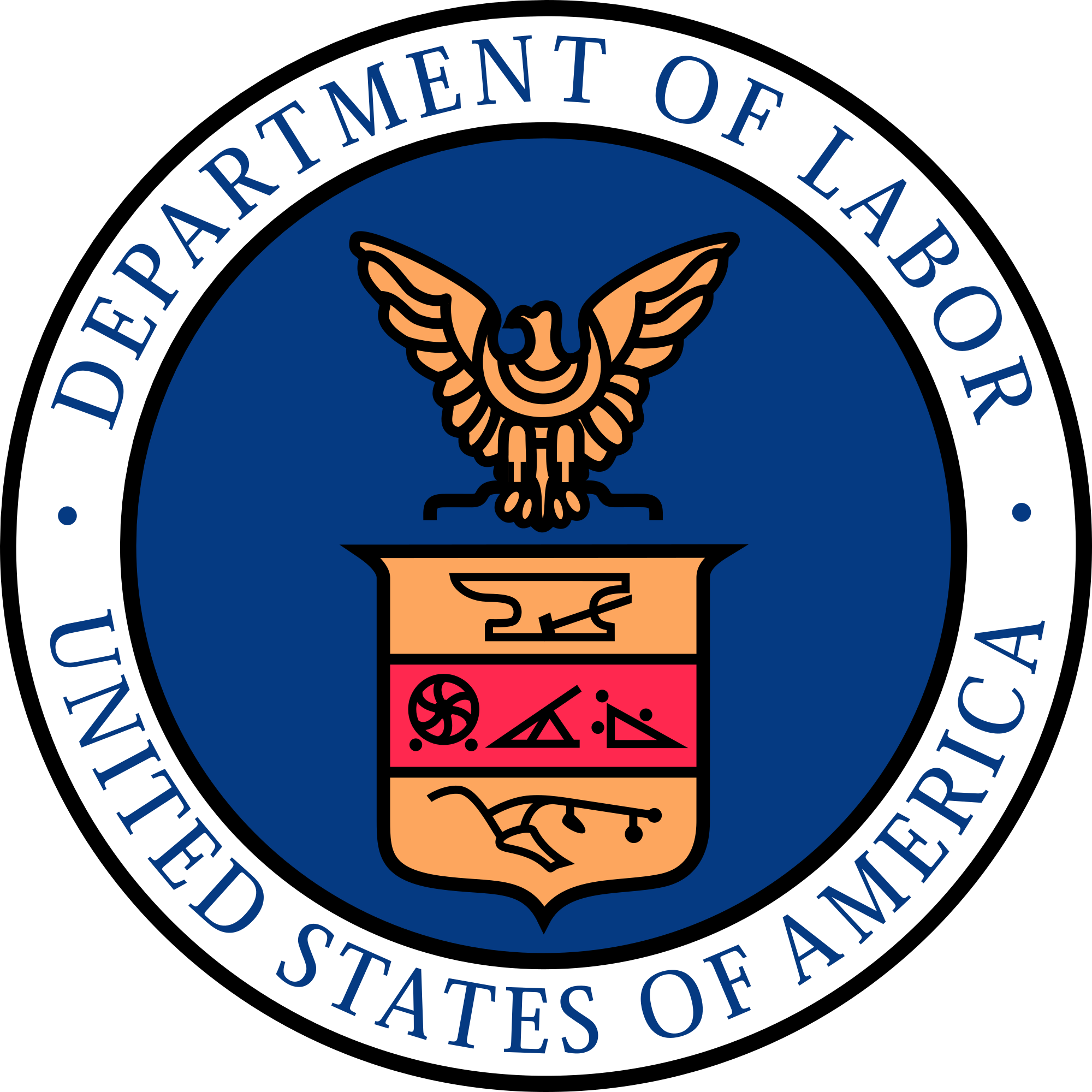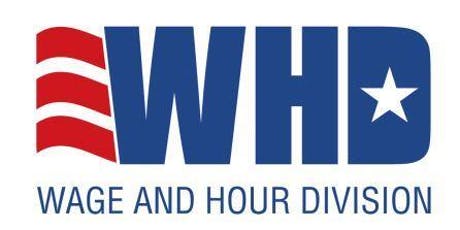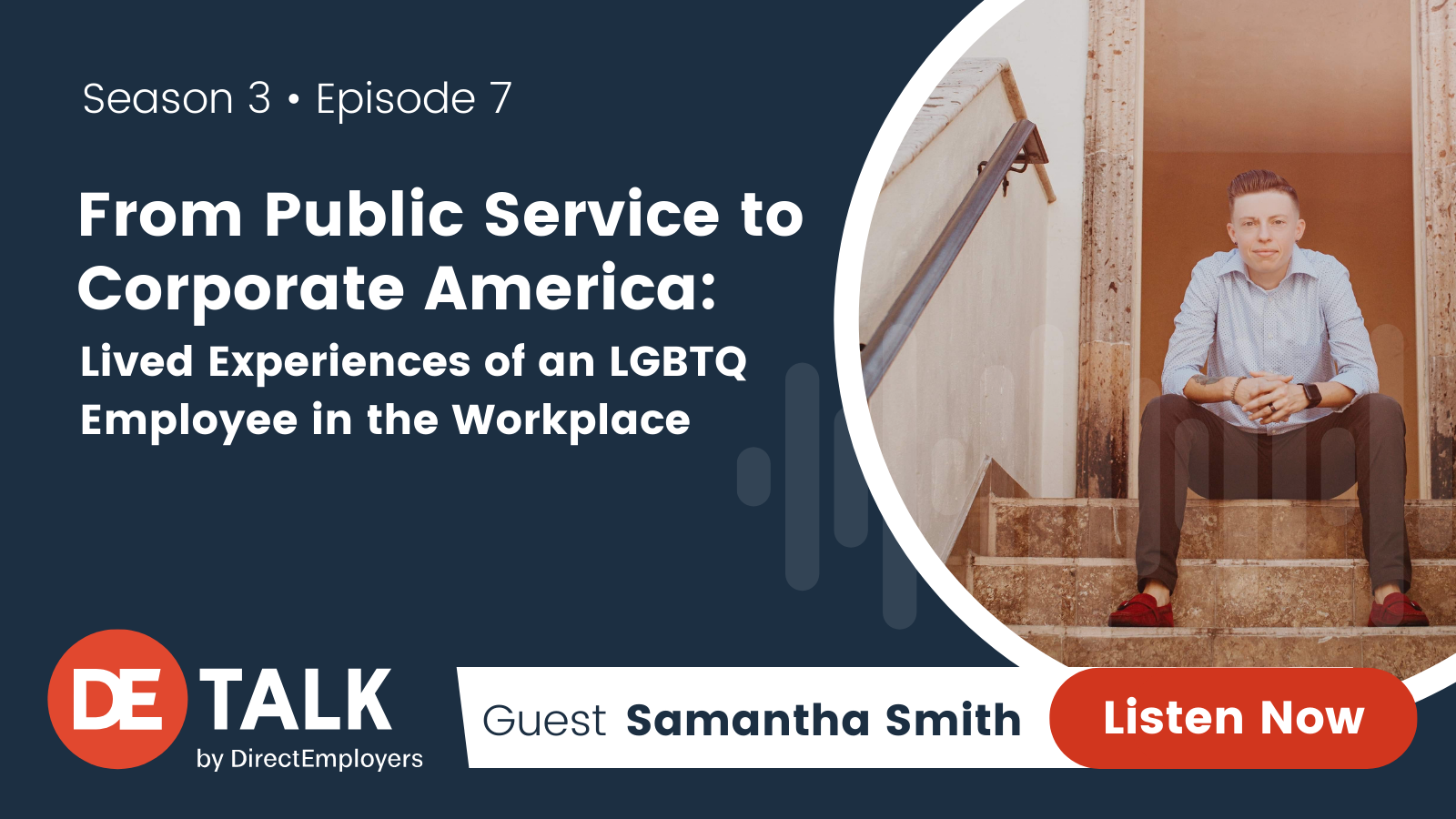
- OFCCP Week In Review Team Named #1 in Government Contracting in JD Supra 2022 Readers Choice Awards
- Answers to Title VII Religious Objections to COVID-19 Vaccine Requirements
- $55M Available To Support Workforce Readiness To Individuals Leaving Prison
- From Public Service to Corporate America: Lived Experiences of an LGBTQ Employee in the Workplace
- Inclusive Extended Reality Technology & Hybrid Work Toolkit
- E-Verify To Drop Internet Explorer Support
- Safety Coalition Joined the 90-Day Trucking Apprenticeship Challenge
- WHD Launched Retaliation Webpage
- USDOL Signed MOU to Report to USDOJ Employers Pursuing “No-Poach” Recruitment Agreements And/Or Conspiring to Fix Wages
- Biden Proposal to Update Davis-Bacon Is Designed To Increase Prevailing Wages for Workers on Public Construction Projects
- President Biden Signed Federal Bi-Partisan FY2022 Omnibus Budget Bill Dissing Federal Civil Rights Agencies
- He’s Back! Popular OFCCP Regional Director Sam Maiden Returns, Now As The RD for the Mid-Atlantic Region (Philadelphia)
- Old, But Important, News We Missed. Biden Extended the COVID-19 Pandemic National State of Emergency Impacting Labor Laws
Monday, March 7, 2022: OFCCP Week In Review Team Named #1 in Government Contracting in JD Supra 2022 Readers Choice Awards

We thank our faithful readers for your attention and confidence in our reporting.
Monday, March 7, 2022: Answers to Title VII Religious Objections to COVID-19 Vaccine Requirements

Section “L” is titled “Vaccinations – Title VII Religious Objections to COVID-19 Vaccine Requirements” and includes the following questions. See the guide for the answers.
- Do employees who have a religious objection to receiving a COVID-19 vaccination need to tell their employer? If so, is there specific language that must be used under Title VII?
- Does an employer have to accept an employee’s assertion of a religious objection to a COVID-19 vaccination at face value? May the employer ask for additional information?
- How does an employer show that it would be an “undue hardship” to accommodate an employee’s request for religious accommodation?
- If an employer grants some employees a religious accommodation from a COVID-19 vaccination requirement because of sincerely held religious beliefs, practices, or observances, does it have to grant all such requests?
- Must an employer provide the religious accommodation preferred by an employee if there are other possible accommodations that also are effective in eliminating the religious conflict and do not cause an undue hardship under Title VII?
- If an employer grants a religious accommodation to an employee, can the employer later reconsider it?
Monday, March 7, 2022: $55M Available To Support Workforce Readiness To Individuals Leaving Prison

The U.S. Department of Labor’s Employment and Training Administration announced that it would award up to 15 grants, from $1 – $4 million each, to prepare individuals for re-entry into the workforce after being incarcerated. Funds will go towards learning foundational skills such as job readiness and job search strategies and providing apprenticeships and occupational training opportunities to gain industry-recognized credentials.
Employers: Please see the details below as to how you may get involved and create talent acquisition flow from this diverse and available talent pool.
Grant Details
Authorized by the Workforce Innovation and Opportunity Act (WIOA), Pathway Home 3 Grants will fund projects to serve adults convicted under federal, state, or local law and scheduled for release within 20 to 270 days from the time they enroll in the project.
Organizations seeking grants must partner with a state correctional facility or a local or county jail. Applicants are encouraged to collaborate with employers, industry organizations, or union partners to commit to provide work experience, onsite job-related mentoring, and post-release employment opportunities for participants. Successful applicants will provide training that leads to in-demand skills to meet the needs of local employers.
On A Related Note
- USDOLs Re-entry Employment Opportunities Program
- The Linking Employment Activities Pre-Release implementation study
Tuesday, March 8, 2022: From Public Service to Corporate America: Lived Experiences of an LGBTQ Employee in the Workplace
Courageous conversations begin when you’re willing to share vulnerabilities, stand in those insecurities, and become relatable to those around you. For the internationally awarded public speaker, author, first responder, and LGBTQIA+ activist Samantha Smith, that began when she recited her powerful speech, Last Call.
Tune in to the latest episode of the DE Talk Podcast as Samantha shares her experience first as a police officer in the field and then as an out employee in corporate America. From guidance on supporting LGBTQ employees to recognizing the power of an EEO statement, Samantha shares how being an ally is not a choice but a must for workplace diversity and inclusion.
Tuesday, March 8, 2022: Inclusive Extended Reality Technology & Hybrid Work Toolkit

The Toolkit has six sections starting from XR basics through learning how accessible XR enables inclusive immersive meetings. Gather the necessary information to procure accessible XR technologies for your workplace and learn how to use these technologies in ways that include all employees equally.
On A Related Note
Tuesday, March 8, 2022: E-Verify To Drop Internet Explorer Support

Users may continue to access E-Verify using one of the following supported web browsers:
- Apple Safari
- Google Chrome
- Microsoft Edge
- Mozilla Firefox
Wednesday, March 9, 2022: Safety Coalition Joined the 90-Day Trucking Apprenticeship Challenge
In its final week, the 90-Day Trucking Apprenticeship Challenge continues to gain momentum. We reported last week that the nations’ largest trucking industry joined the challenge, and this week, the U.S. Department of Labor (USDOL) announced a partnership with the Trucking Alliance. The Trucking Alliance is an industry-based safety coalition of freight transportation and logistics companies.
With the partnership’s announcement also comes the news that Maverick USA in Little Rock, Arkansas – an alliance member – has launched the company’s first Registered Apprenticeship (RA) program.
The USDOL is placing high importance on expanding RAs in the trucking industry to build a sustainable pipeline of drivers. RAs seek to provide enhanced safety and training standards while educating on the skills necessary to land high-quality jobs with fair wages.
Thursday, March 10, 2022: WHD Launched Retaliation Webpage

The 18-page Bulletin also provides examples of workplace retaliation of employees seeking to exercise their rights under one or more federal statutes, such as a “worker penalized for using FMLA leave to care for a child,” an “employee [who] calls WHD about overtime,” and a “worker threatened with deportation,” to name a few.
The guidance also discusses constructive discharge (when an employee leaves due to intolerable working conditions), immigrations threats, and remedies and sanctions.
How We Got Here
- November 17, 2021: USDOL, NLRB, and EEOC Discuss Ending Retaliation in The Workplace
- November 17, 2021: EEOC’s COVID-19 Technical Assistance Guide Updated to Include Retaliation Information
- November 10, 2021: NLRB, EEOC, and USDOL Join Forces To Use Their “Bully Pulpits” to Combat Workplace Retaliation: No Substantive Requirements Planned
On A Related Note
DE Members, log in to the DE Academy to watch “DE Masterclass Employment Law Roundtable Tackles Retaliation: The Rising Centerpiece of Civil Rights Enforcement.”
Thursday, March 10, 2022: USDOL Signed MOU to Report to USDOJ Employers Pursuing “No-Poach” Recruitment Agreements And/Or Conspiring to Fix Wages

Antitrust enforcement to prohibit “no poach” agreements only came into the public consciousness when then Apple, Inc. CEO and co-founder Steve Jobs starting shopping “no-poach“ agreements around Silicon Valley to stop other tech companies from raiding Apple’s cadre of talented software engineers. Other tech companies soon got on the no-poach bandwagon before the USDOJ Antitrust Division started assigning investigators to prosecute antitrust and competition law violations and employees started filing lawsuits as they found their job mobility limited. In 2015, in fact, Apple, Google, Intel and Adobe paid out $415 million to almost 65,000 employees to settle claims after Pixar and Intuit (close Apple allies and business partners) and Lucasfilm paid out another $20 million earlier in the same lawsuit. All the companies denied liability saying they settled to buy peace from distracting litigation.
Most industry observers believe the small wave of no-poach agreements which did occur in the early to mid-2010s was aberrational and the practice has stopped now that recruiters understand that restraints on competition can come laden with both criminal and civil liabilities. We will check back in a year to see if anything meaningful came from this MOU, or whether it is just a headline late to the recruitment marketplace which now knows better.
In the meantime, companies should (a) train up their recruiters for the avoidance of doubt and (b) realize that USDOL sub-agencies lack jurisdiction in their investigations and audits to even ask about potential non-competitive recruitment practices. (The implicit assumption in the MOU is that USDOL investigators will overhear or accidentally bump into the existence of no-poach and/or industry-wide wage agreements while undertaking their various and sundry investigations. NOTE: The anti-trust laws exempt union agreements with employers to allow employees and employers to lawfully conspire to set wages pursuant to a collective bargaining agreement.)
Friday, March 11, 2022: Biden Proposal to Update Davis-Bacon Is Designed To Increase Prevailing Wages for Workers on Public Construction Projects

Background Note: The Davis-Bacon Act, as amended, requires contractors and subcontractors performing on federally-funded or federally-assisted contracts in excess of $2,000 for the construction, alteration, or repair of public buildings or public works to pay their laborers and mechanics no less than the locally prevailing wages and fringe benefits for corresponding work on similar projects in the area. Congress has expanded these requirements by identifying numerous “Related Act” statutes to which the Davis-Bacon Act’s prevailing wage Rules apply. Currently, the WHD calculates “locally prevailing wages and fringe benefits” via a survey process and sets the prevailing rate if more than 50% of workers in the geographic area are paid at that amount. If the WHD fails to receive sufficient responses to its survey, the WHD averages the rates for a particular job in a specific area and uses the resulting “blended rate” as an alternative to the majority rate.
The proposed updates, which will have the practical effect of increasing the prevailing wage rate and increasing labor costs for construction contractors, can be summarized as follows:
- The WHD proposes a new methodology that allows the WHD Administrator to adopt state or local wage determinations as the prevailing wage rate when certain criteria are met. This allows the WHD to rely on state and local wage determinations which may be more current than those the WHD commissions.
- The WHD also seeks to allow the WHD to count “functionally equivalent” wage rates together to determine the prevailing wage if a CBA or written policy of the contractor can explain the variation. [Extrapolating and interpolating from wage rates above and below the true wage rate is almost always an erroneous and statistically created Frankenstein number in the same way that just because it is 40 degrees in Boston and 80 degrees in San Jose does not mean it is likely 60 degrees in St. Louis.]
- The WHD would return to the definition of “prevailing wage” used from 1935 to 1983 (the so-called “30% rule”) using a three-step process:
- First, adopt the majority rate if there is one.
- Second, if no majority rate, then adopt the rate paid to the greatest number of workers, provided it was paid to at least 30% of workers.
- Finally, if there is no rate that satisfies either the first or second step, then use a weighted average of the rates reported in the survey for a particular job in a specific area.
Thus, the practical effect is that more prevailing wages will be set by the top 30% of earners (which will be the union wage earners in city-center construction projects) since there is rarely a majority rate. Thus, defaulting to the average of all wage rates in the area will give way far more often to use of the 30% Rule than under the 50% Rule.
- The WHD also intends to change the scope of data it will consider to identify the prevailing wage in a given area by relying on wages paid by county, instead of by “city, town, village, or over civil subdivision of the State” that it currently uses. Additionally, the WHD intends to use surrounding counties should data in the specific county be insufficient.
- The WHD seeks to clarify the definition of “type of construction” to provide examples of work that would fall under the Davis-Bacon Act regulations. These examples (building, residential, heavy, and highway) would more closely mirror the examples the WHD currently uses in general wage determinations it regularly issues. Thus, WHD hopes to impose generalized terms to seek to reduce the number of construction projects which would otherwise fall outside of Davis-Bacon.
- The WHD also seeks comment from the public whether to expand the use of federal project survey data to determine the prevailing wage. Currently, the use of survey data is limited to instances where there is insufficient wage data to determine the prevailing wage.
- The proposed regulation would update how the WHD receives requests for project wage determinations to account for technological advancements, likely resulting in more wage determinations being issued on projects.
- The proposal also expressly provides a mechanism for the WHD to better update certain non-collectively bargained prevailing wage rates on a more regular basis. This reform seeks to address the current WHD budget reality that almost 46% of the nonunion-prevailing wage rates the WHD publishes cannot be updated more frequently than every 10 years, or more.
- The proposal refines and adds definitions seeking to clarify what projects and entities are subject to the Davis-Bacon and Related Act Rules.
- The proposal also revises regulations to clarify and supplement recordkeeping requirements for contractors, including preservation of payroll and other basic records, including worker contact information.
- The proposal would change contractual “flow down” language prime contractors must embed in contracts with lower-tier contractors supporting the federal contract to clarify responsibility for non-compliance and to note that the WHD could potentially debar those contractors which disregard their responsibility to comply with prevailing wage requirements.
- The WHD seeks to expand its authority to obtain certified payrolls by codifying its ability to obtain payrolls even in the absence of an investigation or other compliance action.
- The WHD proposes alterations to funding of fringe benefit plans and calculating the amount of credit a contractor may receive for contributing to a fringe benefit plan.
- Finally, the proposed regulatory changes seek to strengthen the remedial capabilities of the WHD by adding references to monetary relief and calculation of interest for restitution, adding new anti-retaliation contract clauses, and modifying notices for debarment proceedings.
The proposed changes will likely see a net increase in worker wage rates that will impact a construction contractor’s operating expenses.
Friday, March 11, 2022: President Biden Signed Federal Bi-Partisan FY2022 Omnibus Budget Bill Dissing Federal Civil Rights Agencies
But OFCCP Will Not Lose Headcount for the First Time Since President Obama’s First Year in Office 13 Years Ago

Overall, the budget was a major slap down of the White House’s domestic policy agenda revealing a deep divide between both chambers of the Congress and the President on spending and policy priorities: a White House now isolated on domestic policy issues.
Since October 1, 2021, the federal agencies have been operating with funds authorized in three previous Congressional “Continuing Resolutions” (“CRs”) the President signed to provide short-term “stopgap” funding for the agencies until the Congress and the President could pass into law a budget good through the end of the FY 2022 federal Fiscal Year (ends September 30, 2022). All three CRs maintained the agencies’ prior year’s level of spending as lawmakers on Capitol Hill discarded the Biden proposed budget and started from scratch to build a budget which could pass with bipartisan support.
Ushering in a new age of sober reality, the Congress passed a 6.7% overall spending increase for the federal non-defense agencies. Here’s a spot summary:
- U.S. Citizenship and Immigration Services: 220% (two-hundred and twenty %: that is not a typo) budget increase to its largely fee-based budget to unscramble the recently arrived masses at border entries;
- U.S. Customs and Border Patrol: 26% budget increase, including $100 Million (about OFCCP’s total budget) to hire new Border Patrol Officers
- U.S. Bureau of Prisons: $200 Million dedicated budget increase (to hire thousands of new prison officers) above the Biden proposal
- Department of Labor: 3.6% budget increase overall for the Department (including 4.5% for the Employment and Training Administration (“ETA”): to $455M)
- Department of Transportation: 17% budget increase
- Department of Homeland Security: 11% budget increase vs Biden’s proposed $0 increase in budget;
- IRS: 6% budget increase, including funds sufficient to hire 10,000 (ten thousand: again, not a typo) new IRS agents under direct hire authority;
- Energy Department’s Office of Energy Efficiency and Renewable Energy: 12% budget increase vs Biden’s proposed 60% increase
- Immigration and Customs Enforcement (“ICE”): 6% budget increase (to its approximately $8 Billion budget), rebounding from flat or decreased budgets during the Trump Administration
- Environmental Protection Agency: 3% budget increase vs Biden’s proposed 22% increase;
- Office of Federal Contract Compliance Programs (“OFCCP”): 2.3% budget increase of $2.5M (from $105,976,000 to $108,476,000) to keep staffing level even at 451 employees (see below) vs Biden’s proposed increase to $140,732,000…a reduction of $32,256,000 (~30%) from the President’s proposed budget
- Equal Employment Opportunity Commission (“EEOC”): 3.8% budget increase of $15.5M (from $404,500,000 to $420M) vs Biden’s proposed increase to $445,933,000…a reduction of $25,933,000 (~6%) from the President’s proposed budget
- Department of Education, Office of Civil Rights (“OCR”): 4.2% budget increase of $5.5M (from $130M to $135,500,000) vs. Biden’s proposed 13% increase to $144M
- Wage and Hour Division: less than a 2% increase, as WHD requested, from $465,289,000 to $472,955,000
- Department of Education: 3.8% budget increase overall for the Department vs Biden’s proposed 41% increase
|
OFCCP Full Time Equivalent (FTE) Headcount (for reference) |
|
| Fiscal Year | FTE |
| 2011 | 775 |
| 2012 | 755 |
| 2013 | 729 |
| 2014 | 683 |
| 2015 | 621 |
| 2016 | 615 |
| 2017 | 556 |
| 2018 | 514 |
| 2019 | 500 |
| 2020 | 472 |
| 2021 | 451 |
Monday March 14, 2022: He’s Back! Popular OFCCP Regional Director Sam Maiden Returns, Now As The RD for the Mid-Atlantic Region (Philadelphia)

Sam has sat in many chairs at OFCCP over the decades during his prior career at the agency. Read OFCCP Director Jenny Yang’s “Director’s Corner” report in which she traces Sam’s journey over the last two decades through the agency’s east coast offices.
Friday, February 18, 2022: Old, But Important, News We Missed. Biden Extended the COVID-19 Pandemic National State of Emergency Impacting Labor Laws

Despite recent movement by local governments and governors to terminate states of emergency they issued previously; President Biden relied upon the continuing toll COVID-19 has had on the country as deaths from COVID-19 continue to accrue at approximately 1,500 a day even as case counts go down. Most importantly, the continued national emergency by President Biden keeps in place several special powers the federal government can deploy, such as removing certain legal constraints related to administrative actions the government can take and its access to certain monetary spending. For example, the national emergency permits the Secretary of Health and Human Services to temporarily waive or modify Medicare, Medicaid, and Children’s Health Insurance program requirements under Section 1135 of the Social Security Act. Additionally, the national emergency tolls several deadlines pertaining to COBRA election or notice of qualifying events under COBRA, as well as deadlines for filing benefit claims and enrolling in a group health plan. Employers should speak to their health benefits administrator to understand the full list of deadline extensions impacted by the continuation of the COVID-19 national emergency proclamation.
THIS COLUMN IS MEANT TO ASSIST IN A GENERAL UNDERSTANDING OF THE CURRENT LAW AND PRACTICE RELATING TO OFCCP. IT IS NOT TO BE REGARDED AS LEGAL ADVICE. COMPANIES OR INDIVIDUALS WITH PARTICULAR QUESTIONS SHOULD SEEK ADVICE OF COUNSEL.
SUBSCRIBE.
Compliance Alerts
Compliance Tips
Week In Review (WIR)
Subscribe to receive alerts, news and updates on all things related to OFCCP compliance as it applies to federal contractors.
OFCCP Compliance Text Alerts
Get OFCCP compliance alerts on your cell phone. Text the word compliance to 55678 and confirm your subscription. Provider message and data rates may apply.


